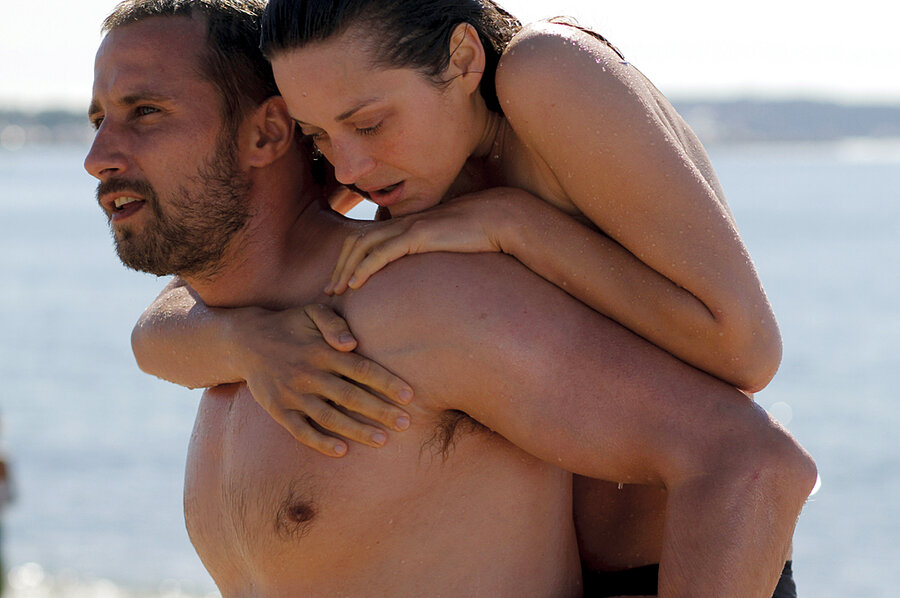Marion Cotillard stars in the shamelessly romantic 'Rust and Bone'
Loading...
It’s always amusing, sometimes edifying, occasionally exhilarating, often annoying when the French attempt to refashion the Hollywood melodramas they so clearly revere. At its best, this syndrome has yielded movies like Godard’s “Breathless” and Truffaut’s “Shoot the Piano Player,” which brought out the lyricism in all those hardboiled Hollywood tropes.
“Rust and Bone,” starring Marion Cotillard, was directed by Jacques Audiard, whose last film, “A Prophet,” was like an old Warner Bros. prison-block movie brought into modern-day melting pot France. His new film doesn’t have as many old movie references as his last, but the entire shebang is like a Frenchified homage to the tough-tender universe of everything from “The Champ” to the Bogart-Bacall duets.
It’s also shamelessly romantic, and how you respond to it will have a lot to do with how willingly you give yourself up to the hooey. I’m as hooeycentric as the next fellow, but after a while I clicked off. Just because Audiard and his co-screenwriter, Thomas Bidegain, pull out all the stops doesn’t mean that I have to.
Still, what kept me watching throughout was Cotillard, who has the prized ability of making melodrama seem like drama. (This was also true of such Hollywood counterparts as Barbara Stanwyck and Greta Garbo.) She plays Stéphanie, who works at a Marineland orca aquarium where one day she loses her legs in an accident. Despondent, she reaches out to a man, the hulky bouncer Ali (Matthias Schoenaerts), who once rescued her from a bar brawl. Ali is, of course, a gentle giant around her. He takes her to the beach and brings her back to happiness, both in the waves and in bed. He thinks nothing of her double-amputee condition. Is he simply fulfilling his brutish desires or does he genuinely care for her?
Schoenaerts is a wily actor, a bit like the Sylvester Stallone of “Rocky,” who also played a thug with a heart of silver if not gold. Their love scenes don’t come across as exploitative because essentially we see them through Stéphanie’s eyes. Cotillard shows us how she is renewed by Ali without ever entirely giving herself up to him.
Not content to leave any stone unturned, the filmmakers have Ali become a street brawler for a shady boxing promoter. Stéphanie is repelled at first but soon enough joins the enterprise. My favorite good/bad moment in the movie: Ali is being pummeled, until he spots Stéphanie on prosthetic legs making her way toward him, and emerges victorious. It doesn’t get more shameless than that.
In some ways, this beauty-and-the-beast scenario is reminiscent of “The Wrestler,” which likewise tried to wring pathos from situations in which fists speak more directly than words. Audiard films everything with a “gritty” realism that mostly seems movie-ish. And he telegraphs everything. When Ali reluctantly takes charge of his 5-year-old son Sam (Armand Verdure) and they venture out onto a frozen lake, well ... need I tell you?
“Rust and Bone” is made by filmmakers and actors who are capable of much more – and they know it. The result is a true oddity: an orgy of hokum dressed up as an art film. Grade: B- (Rated R for strong sexual content, brief graphic nudity, some violence, and language.)





